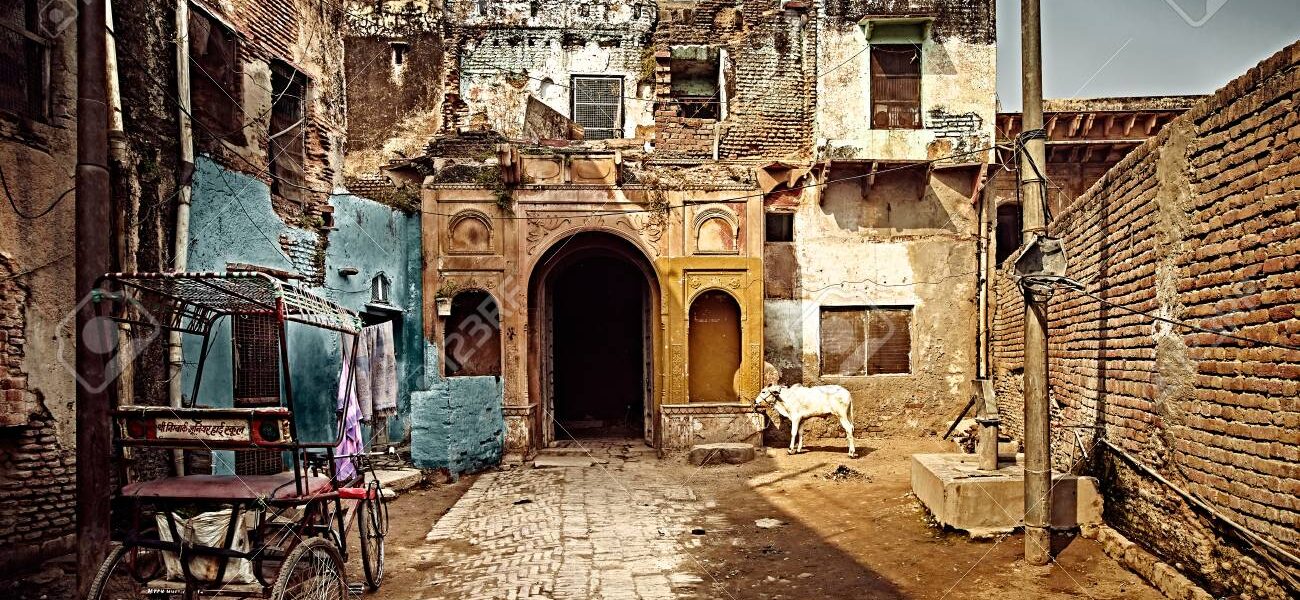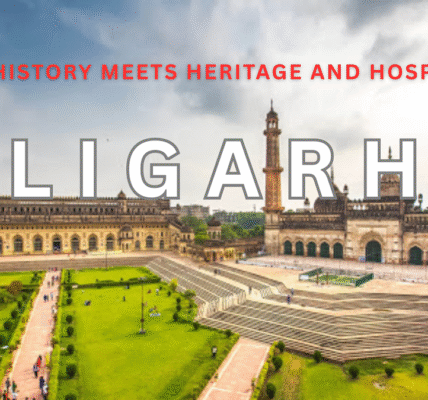Considering its rich heritage in culture, spiritual depth, and inspiring narratives Uttar Pradesh’s culture is an amazing trip through time. Every city in Uttar Pradesh has an origin story worth learning, from the sacred ghats of Varanasi to the religious air of Vrindavan, and from the gorgeous narrow passageways of Ayodhya to the courageous past of Jhansi. The history of Uttar Pradesh will be extensively reviewed in this article, with particular attention paid to the noted towns and their enduring legacy, such as the stories of Ayodhya, Jhansi, Kashi Vishwanath Temple, Varanasi, Vrindavan, and Lucknow.
Uttar Pradesh’s History: The Origins of Indian Culture
During its long history, Uttar Pradesh has been at the heart of India’s political, religious, and cultural traditions. The state, which was home to powerful rulers like the Maurya’s, Guptas, Mughals, and Nawabs, has been important in shaping Indian culture.
The recent past of Uttar Pradesh is as diverse as its natural environment, covering everything from historical trade routes and intellectual’s centers like Nalanda and Kashi to movements for liberty that destroyed British control. Cities like Varanasi, Lucknow, and Jhansi witnessed the rise and fall of royalty and empires, yet they remain thriving with cultural legacy and historical pride.
The History of Ayodhya: Lord Rama’s The birthplace
Ayodhya holds special importance among Uttar Pradesh’s most cherished and ancient narratives, as it is believed to be the birthplace of Lord Rama, one of the main characters in the Ramayana. Millions of devotees globally honor this ancient city, which is located on the banks of the Sarayu has River.
On the basis of traditional Hindu literature, Ayodhya is one of the oldest communities presently present in the entire world because its origins predated the Treta Yuga. The Maurya’s, Guptas, and Mughals, among other dynasties, have dictated Ayodhya. The recent construction of the spectacular Ram Mandir has underlined Ayodhya’s cultural and religious significance, giving the city recognition around the world.
Jhansi’s History: A Symbol of The act of bravery and The opposition:
Bravery and opposition are interconnected with Jhansi’s history. Located in the Bundelkhand state region, Jhansi gained immortalized in Indian history as the result of Rani Lakshmibai’s famed 1857 rebellion against British tyranny.
Commonly to as the “Queen of Jhansi,” Rani Lakshmibai symbolizes bravery and loyalty. “Throughout Jhansi’s history, people have witnessed her strategic skill and unwavering determination as she led the army into war and refused to surrender. Her legacy continues to inspire generation after generation, and the Jhansi Fort actively tells the tale of her perseverance as a remarkable historical attraction.
Kashi Vishwanath Temple’s History: Varanasi’s Spiritual Cultural heritage:
The history of the Kashi his character temple, which is among the nation’s holiest temples, has an intimate connection to the nation’s spiritual identity. Situated in the Indian city of Var one of the world’s greatest cities, this temple pays tribute to the Hindu god Shiva.
The temple of Kashi Vishwanath had an extensive past that extends back thousands of years. Throughout history, it has been continuously damaged and refurbished, particularly under the Mughal emperor Aurangzeb. The temple has endured as an expression to determination and faith in a time of several invasions and disasters. Prime Minister Narendra Modi oversaw the makeover of the building in question, which is a part of the Kashi Vishwanath Corridor and was recently made more easily accessed and opulent.
Varanasi’s History: The Holy City
Without the examining Varanasi, no knowledge of Uttar Pradesh would be considered complete. It has been described as one of the oldest repeatedly inhabited the cities in the world and is also known as Kashi or Banaras. Varanasi’s past is a living example of India’s rich spiritual and cultural heritage.
Mythology claims that Lord Shiva founded Varanasi. It developed into a center of art, spirituality, and wisdom throughout many centuries. There are many colorful traditions throughout Varanasi’s history, covering everything from old Buddhist teachings to Hindu rites. Scholars, poets, and saints which include Ravi Das, Kabir, and Tulsidas have all liked it. The city has a timeless charm than radiates its narrow lane sets, temples, and ghats.
Vrindavan’s History: Lord Krishna’s Childhood
Faith and love from God are at the root of Vrindavan’s history. Recognized as Lord Krishna’s playground, Vrindavan, located exists close to Mathura, served as where he spent the early years of his life. Different temples and constructions within the city reflect the amazing tales of Krishna’s leelas with Radha and the Gopis.
In any given year, millions of devotees become attracted to Vrindavan by its rich past.Visitors can observe the extremely spiritual environment of this important town in major temples such as the Banke Bihari, ISKCON, and Radha Raman Temple.In this modern era, it continues to be a vibrant spiritual crossroads and was essential to the Bhakti group.
History of Lucknow: Nawabi Grandeur, Culture, and Cuisine
The recent past of Lucknow includes political have significance cultural depth, and and Nawabi charity. In the nineteenth and twentieth centuries, Lucknow, frequently referred to as the “City of Nawabs,” developed under the Awadh Nawabs’ reign.
The history of Lucknow:
Its distinct contribution to Mughlai food, Kathak dance, and Urdu—the written word—distinguishes it.. Bara Imambara, Rumi Darwaza, and Chota Imambara are wonderful instances of outstanding structures that highlight the city’s historical magnificence. Lucknow strengthened its position in the fight for Indian independence by emerging as one of the major hubs of opposition to British rule. Following the revolt that took place in 1857.
Maintaining the Tradition: The Value of Understanding UP’s Past
It is essential to comprehend Uttar Pradesh’s past in order to appreciate India’s cultural development. Every component contributes a distinct aspect to the state’s identity, from the histories of Varanasi and Ayodhya to the bravery of Jhansi and the spiritual presence of Vrindavan.
Sites facilitate a more thorough understanding of both regional and national history. Like the temple in Kashi Vishwanath, the ancient forts of Jhansi, Lucknow’s royal heritage, and Ayodhya’s mythological origins. We must preserve these traditions via digital media, travel, and education for the benefit of future generations





